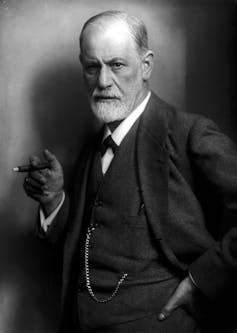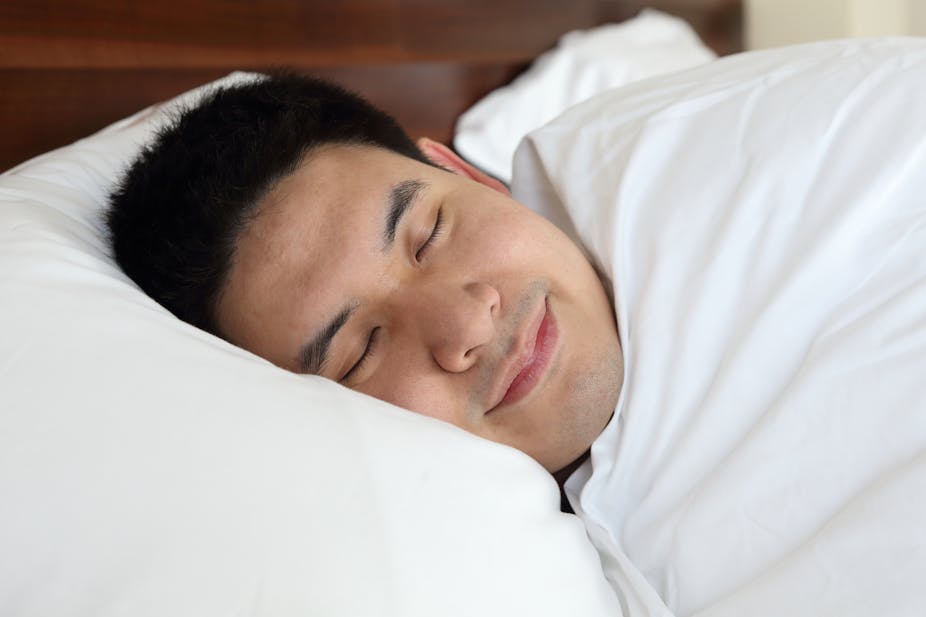It is the most well known – and perhaps infamous – theory of dreams in the Western world. At the turn of last century, Sigmund Freud published his book, The Interpretation of Dreams, arguing that our dreams are nothing more than wishes that we are looking to fulfil in our waking lives. Some of these wishes are relatively innocent, and in these cases our dreams picture the wish just as it is. However, there are other wishes that are so unacceptable to us (such as sexual or aggressive impulses that we can’t admit to or act out) that our dreams have to censor them.
Such unacceptable wishes are typically suppressed by the conscious waking mind but turn up in the dream in an unrecognisable and often bizarre way. But with the help of a psychoanalyst and methods like free association, Freud argued, the wish behind the dream could be discovered.

Despite the theory’s fame and influence on other psychological theories it has fallen into disrepute in recent years, and been roundly debunked by modern dream scientists. Dozens of theories about why we dream now exist – from helping to process our emotions and strengthening new memories to rehearsing social or threatening situations. But no one theory now dominates, as Freud’s once did.
Revealing experiments
However over the past decade or so, a new series of experiments have begun to demonstrate that at least one part of Freud’s theory might have been correct after all: that we dream of things we are trying our best to ignore.
The first of these experiments was conducted by Daniel Wegner, who noticed that when we are trying hard to ignore or suppress a thought, it often just keeps coming back. He suggested that this is because we have two psychological processes at work at the same time when we try to suppress a thought: an operating process that actively suppresses it, and a monitoring process that keeps an eye out for the suppressed thought. Thought suppression is therefore complicated and can only be achieved when the two processes are working together harmoniously.
Wegner suggested that these processes might fail during rapid-eye-movement (REM) sleep. During REM sleep parts of the brain that are needed for thought suppression – such as those involved in attention, control and working memory – are deactivated. We know that a large number of our dreams come from REM sleep, so Wegner hypothesised that we would see a lot of suppressed thoughts making a reappearance in dreams.
Interestingly, he managed to test this idea in 2004. In his experiment, participants were asked to identify a person they knew and then to spend five minutes writing a stream-of-consciousness (about whatever came to mind) before going to bed that night. The first group of these participants were told specifically not to think about the person during their five minutes of writing, whereas a second group were told to specifically think about them. A third group could think about whatever they wanted. When they woke up in the morning, they all recorded any dreams they could remember having that night. The results were clear: the participants who were instructed to suppress thoughts of a person dreamt of them much more than the participants who were instructed to focus their thoughts on the person and the participants who could think about whatever they wanted. Wegner called this the “dream rebound effect”.
Since that experiment, we’ve learned a lot more about the dream rebound effect. For example, it has been found that people who are generally more prone to thought suppression experience more dream rebound, and that suppressing a thought not only leads to more dreams about it, but also to more unpleasant dreams.

In some of my recent research, I found that people who generally try to suppress their thoughts not only dream about their emotional experiences from waking life more – in particular unpleasant situations – but also have worse sleep quality and higher levels of stress, anxiety and depression than others. In fact, we know now that suppressing thoughts is related to a whole host of mental health concerns.
Because of this, we really need to better understand what happens to thoughts when we try to suppress them. Paying attention to our dreams, then, could help us to identify things in our lives that we’re not paying enough attention to that are causing us problems. This may mean that there is merit to exploring dreamwork in therapy. In fact, recent research has shown that exploring dreams is an effective way of obtaining personal insight – both in and out of therapy settings.
The verdict on Freud
There are still plenty of aspects of Freud’s theory of dreaming that haven’t been (and can’t be) tested empirically. It’s possible to argue that fulfilment is involved in almost any dream, but it’s impossible to prove or disprove it. In later writings, Freud admitted that the theory could not account for all types of dreams, such as the nightmares associated with post traumatic stress disorder. His theory also takes the agency of the dream interpretation away from the dreamer and into the hands of the analyst, which is at odds with ethical guidelines for dreamwork that are now typically followed.
Nevertheless, some aspects of the theory have stood up to experimentation – for example, dreams from REM sleep are full of aggressive interactions, which Freud could have used as evidence of suppressed aggressive impulses playing out in our dreams.
So while the exact extent to which Freud’s theory about dreams was correct remains unclear, in at least one respect, it looks like he got it right after all: dreams really are the royal road to a knowledge of the unconscious –- where banished thoughts live on.

